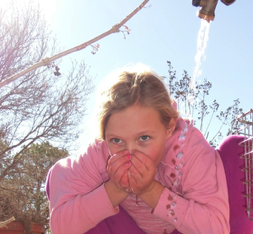The Problems
Clean, safe water is
essential to a healthy life.
Nitrogen contamination in the southern half of Minnesota is so severe that 27 percent of the state’s lakes and rivers could not be used as drinking water.
41 percent of Minnesota’s streams and lakes have excessive nitrogen, all of them in the state’s southern and central regions.
The nutrient, which is used as fertilizer in agriculture and comes from wastewater treatment plants, can be toxic to fish and other forms of aquatic life. It is a primary cause of the vast oxygen-depleted area in the Gulf of Mexico known as the dead zone.
Read about the water problems in Southern Minnesota here. If it is slow to load then go to StarTribune.com and search for Nitrogen pollution widespread in southern Minnesota waters, report finds
Click on the text to get a FactCheck.org report summarizing impact of fertilizer on soils and health titled All Wet on Water Quality Data
Below is additional information grouped into BASIC and ADVANCED categories.
Newsletter #10, December 2019, addresses drinking water issues. Additional supporting information is below.
BASIC
If your well has between 3 and 10 milligrams per liter (mg/l) of nitrates in the water there is a very high likelihood that it also has pesticides. Private well owners are responsible for testing of their own wells. 1.2 million people in Minnesota gets their drinking water from private wells.
The wells should be tested regularly.
Minnesota Department of Health offers the following Owner’s Guide to Wells
Minnesota Department of Agriculture is conducting a multiyear testing of private wells in townships around the state. This link brings you to the results which includes several townships in Southeast Minnesota.
ADVANCED
For those who want to dig deeper, here are some references that should be helpful:
The Minnesota Well Owners Organization …
——Is a nonprofit organization (501 (c) 3 status applied for) (Donations are tax deductible)
——For private well owners
——Provides education, technical and legal services, and advocacy
——Preserve, protect, and restore Minnesota’s water resources
——Ensure the the safety of those who use private wells for drinking
The Minnesota Environmental Quality Board offers informative information and data:
——Beyond the Status Quo: 2015 EQB Water Policy Report is a comprensive look at the status of water in Minnesota, issued every five years. They are now beginning work on the 2020 report.
––The 2019 Minnesota Energy and Environment Report Card is a comprehensive look at Climate, Energy, Air, Water, and Land issues. It shows sosme progress beeing made and lots of problems needing action.
The Minnesota Pollution Control Agency offers a comprehensive report on Nitrogen in Surface Waters. It is educational and full of data.
“The Zumbro Watershed Partnership is a member-based, nonprofit organizations dedicated to creating a watershed where everyone can swim and fish in our rivers and drink clean water from our wells.” Their website offers lots of local information.
The Water Quality Association offers a Nitrate/Nitrite Factsheet with explanations, definitions, and lots of relevant references.
Nitrate/Nitrite contamination has significant societal costs. Here are some references:
Cost of Nitrate Contamination of Public Water Supplies
Responding to groundwater nitrate contamination is costly and can be a significant burden on the budgets of small towns. For this study, managers from seven Minnesota cities were interviewed to learn how much they spent in response to nitrate contamination. This is a 2007 report for the MN legislature.
Despite growing recognition of the negative externalities associated with reactive nitrogen (N), the damage costs of N to air, water, and climate remain largely unquantified. We propose a comprehensive approach for estimating the social cost of nitrogen. Published in 2016.
Three agencies share the monitoring and control of pollutants in Minnesota:
• The Minnesota Pollution Control Agency focuses on pollutants and stressors in lakes and streams (surface waters)
• The Minnesota Dept. of Agriculture focuses on pesticides and groundwater
• The Minnesota Dept. of Health focuses on drinking water, which comes from both surface waters and groundwater
The Solution?
Healthy Soil Clean and Capture Water
Soil plays an important role in capturing and cleaning water. Soil texture, structure, and land coverings all have roles in determining how easily water will move through the soil to alter, store, and distribute water to reduce runoff and flooding. The work of cleaning water is done by physical, chemical, and biological processes. Healthy soils are critical to ensure clean water for recreation, consumption, crop production, and more.
—From https://www.soils.org/
Forests play a key role in the protection of the world's water resources and in the global water cycle.
In maintaining high water quality, forests make their most significant contribution to the supply of water.
Through stabilization of soil, forests minimize erosion and hence reduce the impairment of water quality due to sedimentation. Forest and forest plant roots prevent run-off from heavy rains and with it soil erosion. Woodlands protect water bodies and watercourses by trapping sediments and pollutants from other up-slope land use and activities
From: https://www.pefc.org/forest-issues/sustainability/water
Our Water Should be Safe and Clean—It Isn’t

